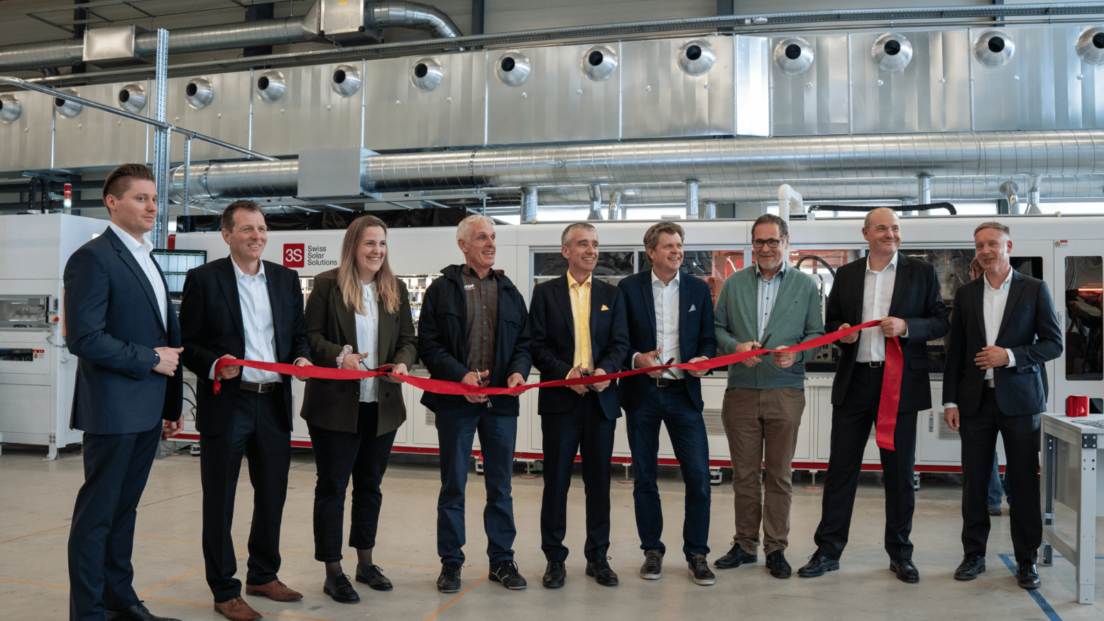3S Swiss Solar Solutions opens second production site in Worb

3S Swiss Solar Solutions has commissioned its second production plant in Worb near Bern. The first TeraSlate solar modules manufactured there are due to be delivered at the end of January 2024. The Thun-based manufacturer has invested over 10 million Swiss francs in order to expand further.
The second production site has been opened at 3S Swiss Solar Solutions AG. In Worb, the Thun-based manufacturer of solar modules is focussing on the production of TeraSlate systems. According to a press release, the G12 cells installed in these systems deliver more power, are more efficient and have improved aesthetically. Delivery of the first modules is planned for the end of January 2024.
The company has invested over 10 million Swiss francs for further growth. At the heart of “Europe’s most modern solar module production” is a 200-tonne laminator in which glass, solar cell strings and special plastic films are pressed into robust modules under heat, according to the press release. This production step is carried out under vacuum and plays a key role in creating a durable, bubble-free encapsulation.
“The highest quality, the best service, sustainable solutions – that’s what makes the Swiss location possible for us and at the same time we have a very central location in Europe,” owner and CEO Patrick Hofer-Noser is quoted as saying. According to the press release, the new production plant is a further step towards the future generation of 3S solar modules. The plant is geared towards larger quantities and the use of larger cell formats. The nominal capacity is estimated at 250 megawatts per year.
In future, the new site will also be used for training and education programmes as well as for company representation in order to relieve the pressure on the bursting headquarters. “Due to the enormous growth in recent years, our possibilities in Gwatt are more than exhausted and the premises are no longer sufficient for the current number of employees,” says Patrick Hofer-Noser.